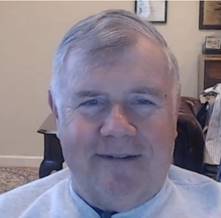GENERALIZING THE GEOMETRICAL FACTOR THEORY
Downtown Houston
Speaker:
Seminar Date: May 11 2022
Registration Opens: Mar 25 2022 - May 11 2022
Time: 11:30 AM - 01:00 PM (US CDT)
Admission/Registration Link: None
Donation Link: None
Meeting/Webinar Link: None
Contact: Ron J.M. Bonnie (President, SPWLA Houston Chapter)
Corresponding: president@spwla-houston.org
Fees:For Student: $10
For Member: $15
For Non-member: $15
NOTES:
Speaker : David Kennedy (QED Petrophysics LLC)
Date : Wednesday, May 11, 2022
Time : 11:30 am – 1:00 pm (US CDT)
Venue : DeGolyer and MacNaughton
: 5151 San Felipe St, Houston, Texas 77056
Live Oak Conference Room at Sage Plaza Lobby
Admission : Regular Admission ($15)
: Student and In Transition Professionals ($10)
Parking Info : Complimentary parking garage inside building. Visitors can park anywhere not reserved (3rd floor and above).
After registering, you will receive a confirmation email containing information.
Walk-ins are welcome but advanced registration is preferred. Please register by May 10th, 2022 @ 5pm to reserve lunch using the provided link.
Contact : Javier Miranda (SPWLA Houston Chapter President)
Corresponding
president@spwla-houston.org

ABSTRACT:
Archie developed his model based upon trends observed in formation resistivity factor - porosity and resistivity index-water saturation plots. The trends appear when the data is plotted on log-log graph paper. The trends are apparently straight lines on log-log paper, which means that they are “power laws” of the form F = 1/φm and I = 1/Swn where m and n are observed to distribute themselves around m and n = 2. Archie did not attempt to connect his empirical discovery to any physical first principles, nor did he discuss alternative trends that might have fit the data. However, Archie’s model filled a void in formation evaluation, and works well. Four decades would pass before researchers began to attempt to connect conductivity in rocks as described by the Archie model to first principles. Since 1980 several attempts to connect the Archie model to first principles were, and continue to be, made. There has been no generally accepted success in the attempts. Waxman and Smits changed the focus of attention from resistivity to conductivity in 1968. This was a step in the right direction, but they retained Archie’s model reformulated in conductivity terms; in that sense there was no change in thinking. The first rethinking of the problem appeared in 1993 by positing three first principles: bulk rock conductivity is proportional to (1) brine conductivity; (2) fractional volume of brine in the rock; (3) a geometrical factor. Brine conductivity and fractional volume of brine (i.e., porosity) are directly measurable, and the geometrical factor can be estimated from measurable quantities. From these “first principles” a model relating bulk rock conductivity to water saturation can be derived. The model, called the geometrical factor theory (GFT), is different from the Archie model, but the Archie model is contained within it as a limiting case. In 2007 a different model based upon a different formulation of the first principles, known as a pseudo-percolation threshold theory (PPTT), was developed. Although different from the GFT, PPTT also contains the Archie model as a limiting case. Since GFT and PPTT are different, it seems as if one of them must be wrong. However, I show that neither is wrong, but both are special cases of a more general model. Whereas Archie analyzed his data in terms of formation resistivity factor versus porosity and deduced a power law, an alternative analysis in terms of formation conductivity factor would have revealed that Archie’s data for both formation factor vs. porosity and resistivity index vs. water saturation is fit, arguably better, by a quadratic function. The quadratic function follows directly from observed first principles, whereas Archie’s power law does not. I call the new model the Generalized GFT (GGFT), and show that it subsumes the GFT, PPTT, and Archie’s model as special cases. Interestingly, the shaly sand models can also be accommodated in GGFT. As an explanation of the Archie model from first principles has long been a Holy Grail of petrophysics, this is of significant interest.
BIOGRAPHY:
David Kennedy began a career in the logging industry in 1973 following earning a B.S. in Physics at Georgia Tech. He entered the industry as a Schlumberger field engineer in California and Alaska, staying with Schlumberger for five years. Following that, Dave returned to school and earned Masters’ degrees in Physics and Earth Sciences at the University of Texas at Dallas, with further studies at U. C. Berkeley. In his career, he has worked in one or another capacity at Arco, Sohio Research and operations, Mobil Research and operations, ExxonMobil Research and operations, Baker-Hughes, PathFinder, and Southwestern Energy. David has been an SPWLA member for 40 years and served as V.P. Publications and Editor of Petrophysics from 1999-2002, V.P. Technology in 2009, and President (etc.) from 2014-2016. David is inventor or co-inventor on six U.S. Patents and has published about 45 articles as author or coauthor in conference proceedings and refereed journals. His major research interest has been formation conductivity interpretation and electromagnetic logging instrumentation. David has been an educator all his life, having taught courses at the USMA at West Point, courses in computer science, physics, materials science, and electrical engineering at San Francisco Bay Area private and junior colleges. He is now recently retired as a professor in the Petroleum Engineering Department at Texas A&M University instructing graduates and undergraduates in formation evaluation. Before all of that, David served as a Lieutenant of Infantry in Vietnam where he received both a Purple Heart and Bronze Star with V device.
